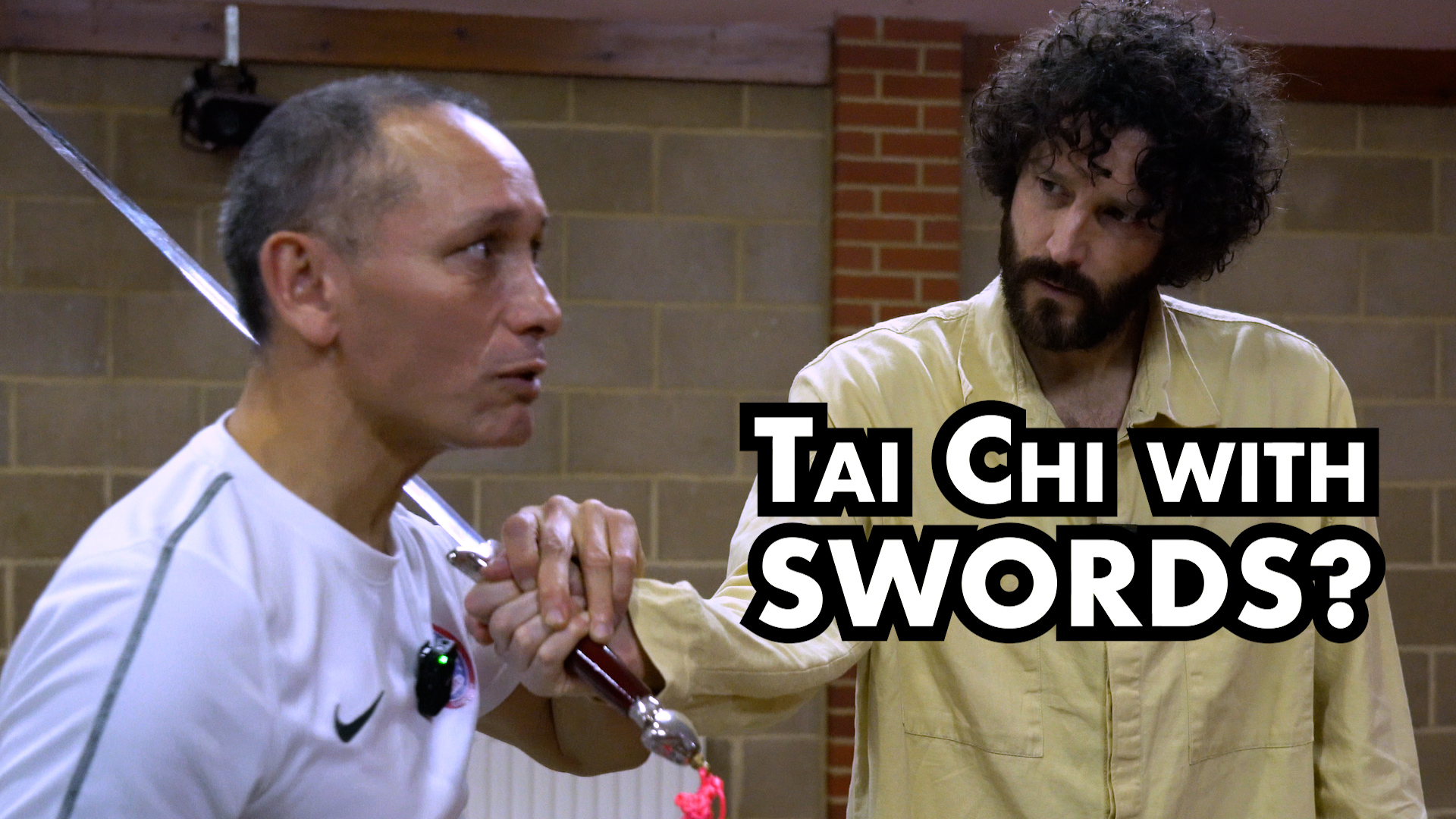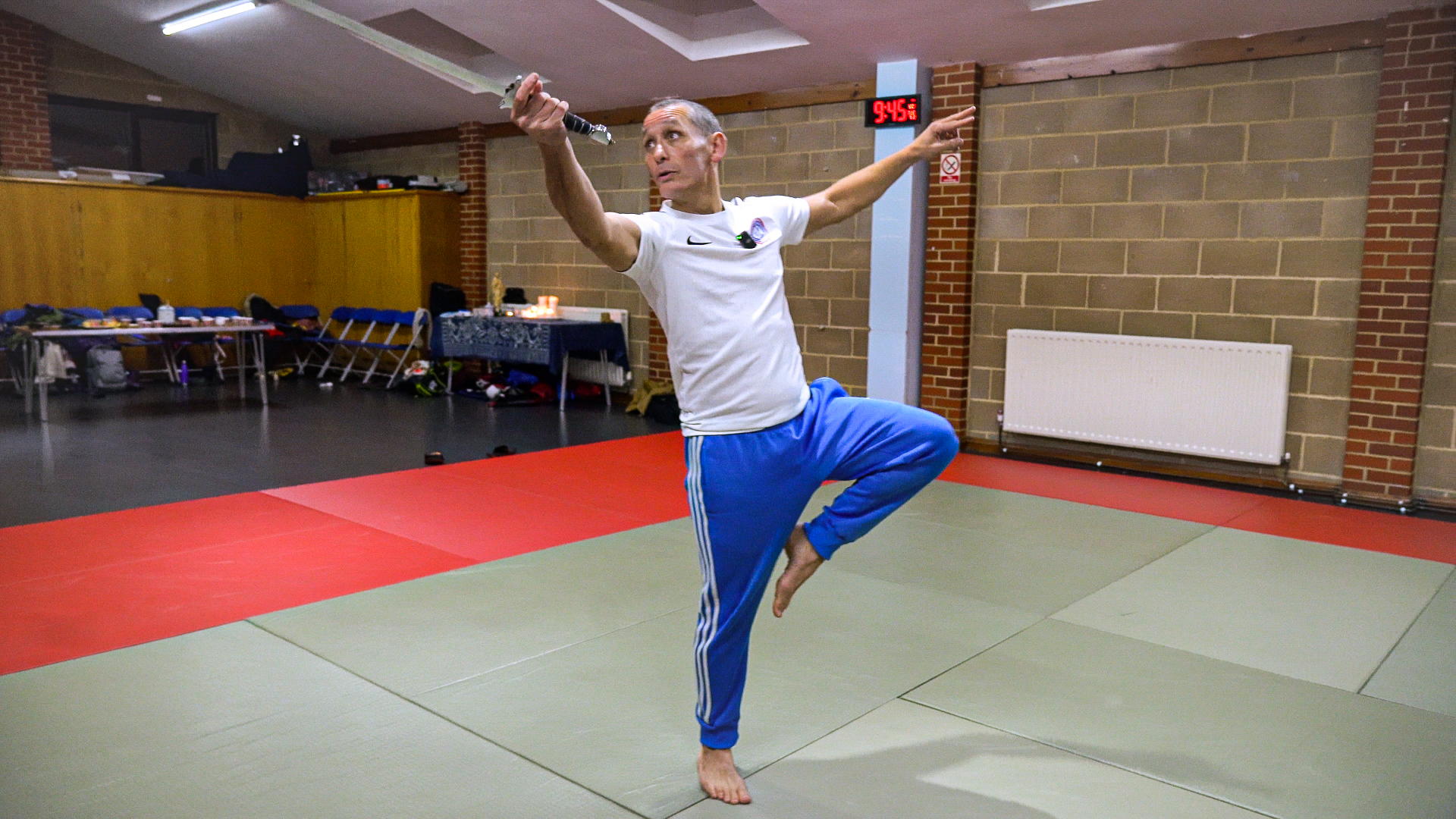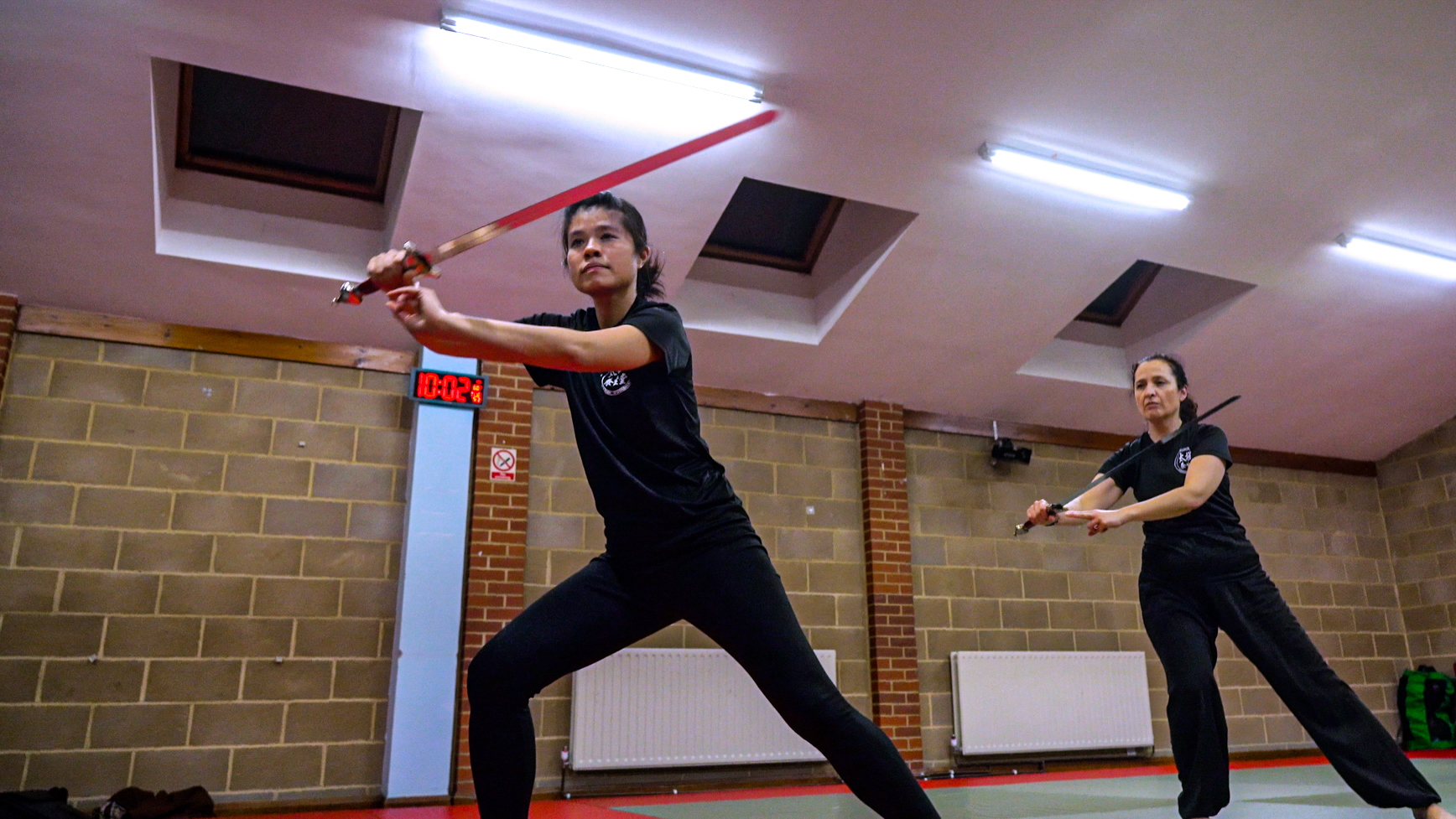07:02

When people think of Tai Chi, some may imagine it to be that perfect exercise practised in a park on a crisp sunny morning - a sequence of slow, meditative, gentle exercises to help you ease into the day.
But Tai Chi can take more than one form and it can even involve sword wielding.
READ MORE
Female motorsport champ Jamie Chadwick targets F1
Bullfighting: Barbaric sport or an iconic tradition?
Spain's Muay Thai champion: Refugee to Olympic hopeful
CGTN Europe met Tai Chi instructor Barry McGinlay in a dojo in London. The soft spoken but energetic man has been fascinated with martial arts since he was a child, inspired by Bruce Lee and David Carradine. He has been practising for decades and says it requires patience.
"It takes 25 to 30 years to become an expert. In the first 10 years, you must learn to taste bitter," warns McGinlay.

Tai Chi emerged about 2,000 years ago in China and is based on Daoist philosophy. /Tom Triebel/CGTN
Tai Chi emerged about 2,000 years ago in China and is based on Daoist philosophy. /Tom Triebel/CGTN
But what exactly is Tai Chi?
Tai Chi emerged about 2,000 years ago in China and is based on Daoist philosophy and especially its most famous concept - the Yin and the Yang. That's opposite but interdependent forces, or energies, working in a system. It can be light and darkness, soft and hard and even order and chaos - one cannot exist without the other.
Daoists believe the universe, our bodies and society form a system where stability relies on the right balance between the Yin and the Yang. According to traditional Chinese medicine, the Qi (pronounced 'Tchee') is an energy that should flow freely inside our body. If it gets stuck, it can lead to pain or illness.
The aim of Tai Chi is to improve the flow of this energy to achieve the fine balance between the Yin and the Yang.

One form of Tai Chi involves the mastery of various weapons such as the cutlass, the staff, the spear and the sword. /Tom Triebel/CGTN
One form of Tai Chi involves the mastery of various weapons such as the cutlass, the staff, the spear and the sword. /Tom Triebel/CGTN
While Tai Chi is mostly practised with empty hands, there is a form that involves the mastery of various weapons such as the cutlass, the staff, the spear and the sword, the latter being the most common of all.
"When we start to have something in our hand, it gives us some intention and it gives us something we can focus on outside of our body, which really helps lead the Qi and energy," says McGinlay.
It makes me think and work differently, and is probably keeping me young.
- Mark, Tai Chi practitioner
The group of McGinlay's students range in age from early 30s to an impressive 85-year old who looks at least 10 years younger. Mark has been McGinlay's student for over a decade.
"It really relaxes me and gets me out of my day-to-day routine. It makes me think and work differently, and is probably keeping me young, as you can tell," Mark says cheekily.
On the other hand, Corinne, another McGinlay student, has a more spiritual take on it: "I like to think that the weapon is an extension of my body and you just let the weapon, the Qi, guide you. You don't think, and that is a wonderful concept."
If you want to try this ancient practice, you can visit Barry McGinlay's website: https://taichilife.com/
Subscribe to Storyboard: A weekly newsletter bringing you the best of CGTN every Friday